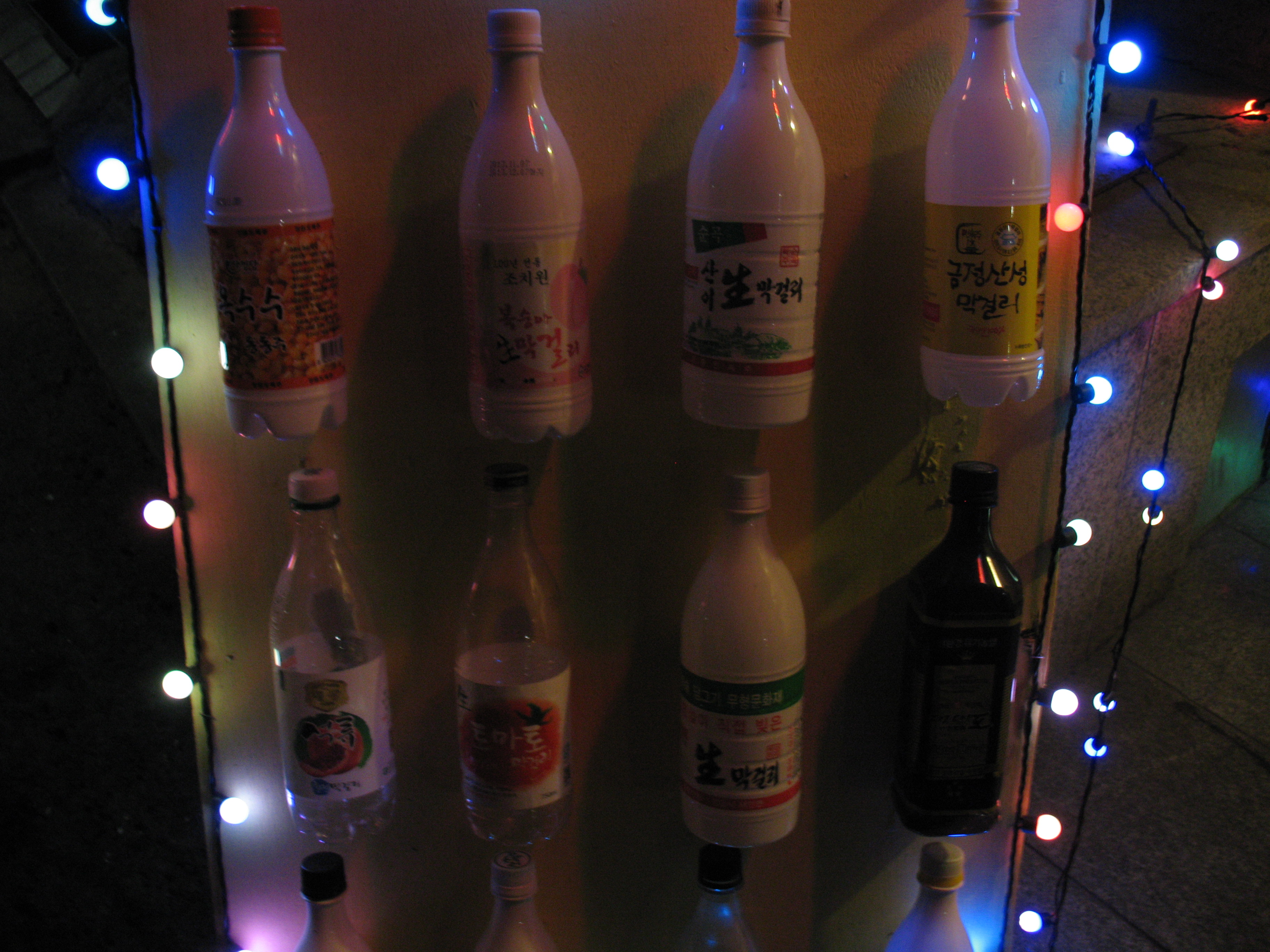In Korea, old brews get new life
SEOUL -- As the sun sets over Seoul, a low-lit basement bar in a back street in the traditional district of Anguk fills up with a cool, 20- to 30-something clientele. Across town, in a tangle of alleys in Noksapyeong, a foreign-centric district across from the giant U.S. Army base, thirsty patrons crowd into a string of bright, packed pubs.
In Anguk, the draw is a milky-looking white liquid, gurgling into bowls from plastic bottles: makgeolli, a traditional rice brew undergoing a remarkable renaissance. In Noksapyeong the tipples bubbling into clear glasses are brown, black and white: artisanal ales, porters and wheat beers.
These craft brews, and the bars which serve them, are emblematic of changes in South Korea’s drinking culture and consumer lifestyle.
For decades, booze choices nationwide were largely restricted to soju, the local grain-based firewater; bland, mass-market lagers; and more recently, pricey imported wines. But in recent years, a wave of exciting new beers, both international-style and Korean-style, have washed through the market. (Usually mistranslated as “rice wine,” makgeolli is categorically a beer. It is brewed not fermented; is made from cereals not fruits; and is quaffed, not sipped.)

“Korea has come a long way in its drinking culture,” said Eric Thorpe, a PR executive and long-term expatriate. “I used to live in Tokyo, and Seoul has become as fun a place to go out at night as Tokyo – in some ways better.”
What happened? Three developments enabled the trend: regulatory change; globalization; and a shift in local tastes toward lower-alcohol, healthier drinks.
Makgeolli was traditionally a peasants’ drink; the choice for low-income, middle-aged, rural tipplers. Change came when a series of regulations were lifted in the late 1990s, permitting makgeollis – whose sales were previously limited to their native provinces – to be sold nationwide.
The expanded market, boosted by festivals and competitions, ignited increases in quality and range. Innovative brews – some infused with such ingredients as berries and herbs – flooded the scene. A range of funky new bars appeared to supply a newly youthful clientele.
“In the early 2000s people in Tokyo were looking for a cheap alternative to the wine trend sweeping through Asia; a cheap drunk that tasted good,” said Joe McPherson, who runs Seoul’s Zenkimchi blog. “The Japanese liked makgeolli, so the trend was bought back to Korea by Japanese – even though it is Korean stuff!” added Park Chang-hee, owner-operator of Anguk bar Sanchez Makegolli, which serves around 20 varietals.
Internationalization was a concurrent enabler, with fashion-savvy Koreans reacting to and adopting overseas trends.
The first and most influential craft pub in Korea, Noksapyeong’s Craftworks was established by Canadian Dan Vroon in 2010, originally to serve the expatriate community, though Vroon was sure locals would catch on. “Koreans look to trends overseas,” Vroon said. “They knew that craft beer was taking the world by storm. “
The article was widely reported by local media; curious locals poured in to taste the beers of Noksapyeong.
Vroon estimates his clientele pior was around 50 percent foreigners, 50 percent locals; now the ratio is 80-20 in favor of Koreans. Craftworks today boasts four locations, including one in trend-setting Gangnam, and sells to some 40 locations nationwide, including top hotels such as Seoul’s boutique W. Vroon – who, like other Noksapyeong publicans, sources his beers from an out-of-town brewery which is having difficulty keeping up with surging demand – is planning to establish his own dedicated brewery at year end.
(The writer of The Economist article, Daniel Tudor, subsequently retired from journalism and is now a partner in the “The Booth” a chain of craft beer pubs with its flagship in Noksapyeong.)
A third factor has been a move toward tipples that are lower in alcohol than Korea’s customary libation, soju.
“In the past when the economy was bad, my father said there was a taste for stronger alcohol,” said Kang Ju-jin, an attractive, 20-something marketer drinking corn-infused makgeolli in Sanchez. “Nowadays, with the economy better, people prefer lighter drinks.”
Indeed, clientele in both Sanchez and Craftworks is largely 20- to 30-something local females.
The trend is now going mainstream. Korea’s duopoly of big brewers, whose products have thus far been limited to American-style lagers, are upping their game: Jinro-Hite produced an ale last year, and OB is planning an imminent launch.
It could also go international. Seoul’s top traditional alcoholic producer Kooksoondang, launched a canned, spritzer-style grapefruit makgeolli last year that appears tailor-made for Western markets. And Vroon hopes that once his own brewery comes online, he, too, will be able to export.
This post was originally published on Smartplanet.com